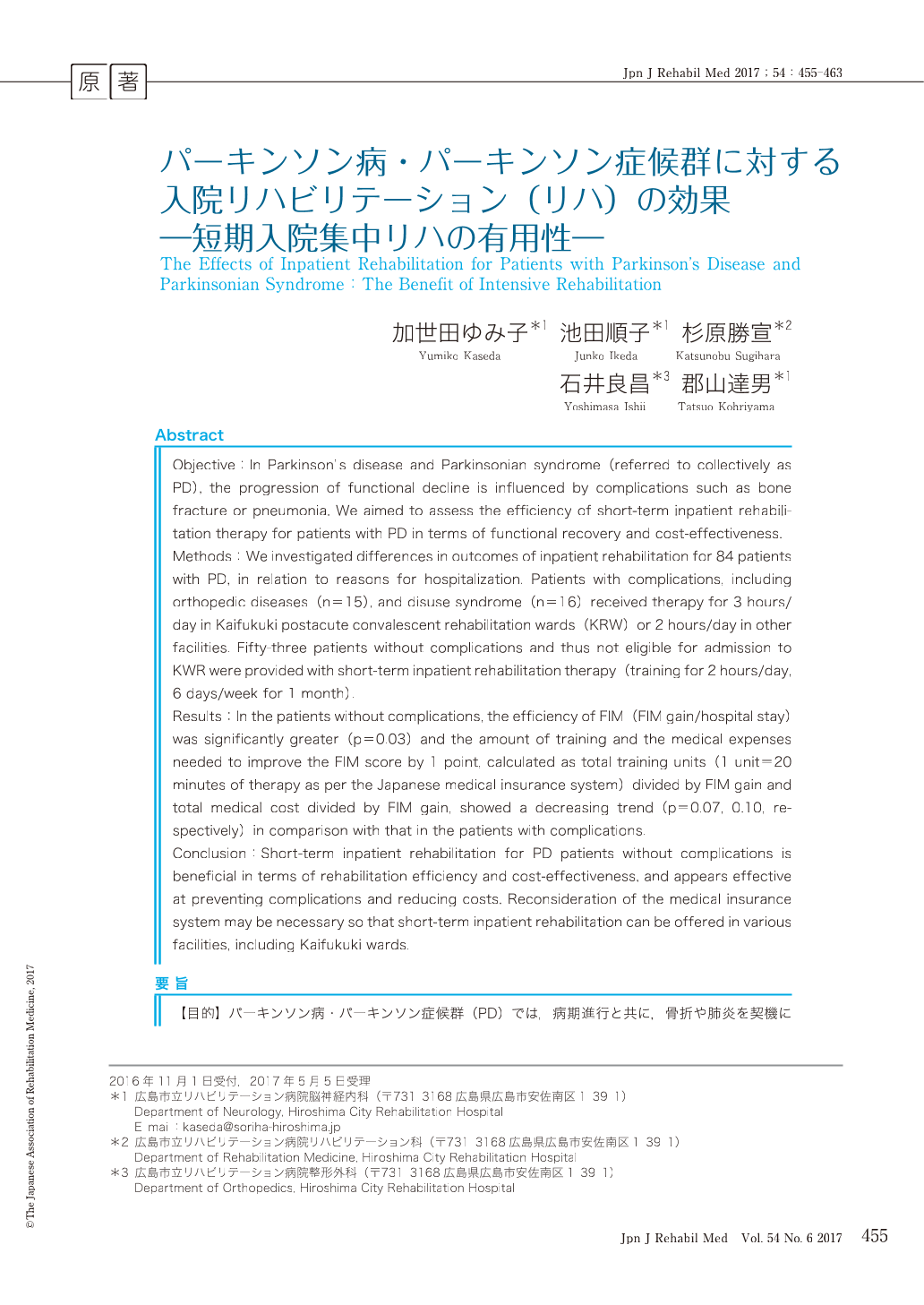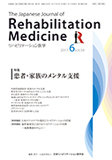Japanese
English
- 販売していません
- Abstract 文献概要
- 1ページ目 Look Inside
- 参考文献 Reference
要旨
【目的】パーキンソン病・パーキンソン症候群(PD)では,病期進行と共に,骨折や肺炎を契機に機能が低下する.本報告では,合併症のないPDに対する短期入院集中リハ(1カ月)の有用性を検討した.
【方法】PD患者84名の内訳は,合併症なし群53名,合併症あり群31名(整形外科疾患15名,廃用症候群16名).リハビリテーション(リハ)提供体制は,合併症なし群では一般病棟のみ,合併症あり群では回復期リハまたは一般病棟で,患者を5群に分類した.短期入院集中リハの成績を合併症あり群と比較した.
【結果】①5群でFIMが改善した.②合併症なし群では合併症あり群より有意にFIM効率が高く(p<0.05),リハ総単位数/FIM利得,総診療点数/FIM利得が低い傾向がみられた(p=0.07, p=0.1).
【結論】合併症発症後のリハ効率は不良であった.合併症発症前の短期入院集中リハはコスト効率も優れる傾向がみられた.
Abstract
Objective:In Parkinson's disease and Parkinsonian syndrome (referred to collectively as PD), the progression of functional decline is influenced by complications such as bone fracture or pneumonia. We aimed to assess the efficiency of short-term inpatient rehabilitation therapy for patients with PD in terms of functional recovery and cost-effectiveness.
Methods:We investigated differences in outcomes of inpatient rehabilitation for 84 patients with PD, in relation to reasons for hospitalization. Patients with complications, including orthopedic diseases (n=15), and disuse syndrome (n=16) received therapy for 3 hours/day in Kaifukuki postacute convalescent rehabilitation wards (KRW) or 2 hours/day in other facilities. Fifty-three patients without complications and thus not eligible for admission to KWR were provided with short-term inpatient rehabilitation therapy (training for 2 hours/day, 6 days/week for 1 month).
Results:In the patients without complications, the efficiency of FIM (FIM gain/hospital stay) was significantly greater (p=0.03) and the amount of training and the medical expenses needed to improve the FIM score by 1 point, calculated as total training units (1 unit=20 minutes of therapy as per the Japanese medical insurance system) divided by FIM gain and total medical cost divided by FIM gain, showed a decreasing trend (p=0.07, 0.10, respectively) in comparison with that in the patients with complications.
Conclusion:Short-term inpatient rehabilitation for PD patients without complications is beneficial in terms of rehabilitation efficiency and cost-effectiveness, and appears effective at preventing complications and reducing costs. Reconsideration of the medical insurance system may be necessary so that short-term inpatient rehabilitation can be offered in various facilities, including Kaifukuki wards.

Copyright © 2017, The Japanese Association of Rehabilitation Medicine. All rights reserved.


